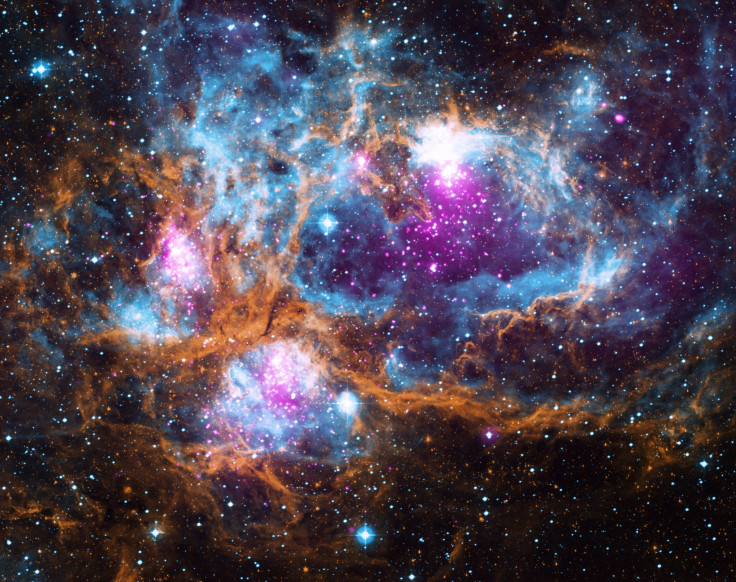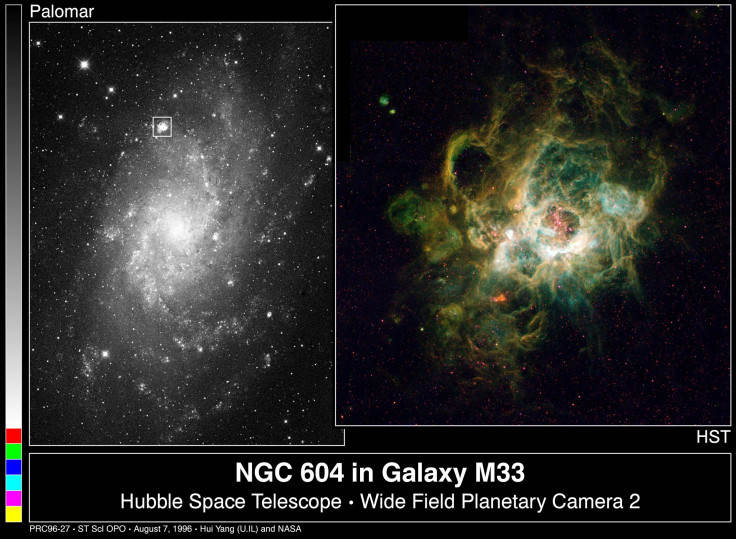Astronomers Spy NGC 6357 — A Massive Stellar Nursery Located 5,500 Light-Years From Earth

Over 5,500 light-years from Earth lies a massive cluster of stars, gas and dust. The NGC 6357 cluster, which is actually composed of three separate groups of young and hot stars, has now been revealed in unprecedented detail in a composite image released by NASA on Monday.
The image contains X-ray data gathered by NASA’s Chandra X-ray Observatory and the ROSAT telescope, infrared data from NASA’s Spitzer Space Telescope, and optical data from the SuperCosmos Sky Survey made using the United Kingdom Infrared Telescope.
“The X-rays from Chandra and ROSAT reveal hundreds of point sources, which are the young stars in NGC 6357, as well as diffuse X-ray emission from hot gas,” NASA said in a statement accompanying the image. “There are bubbles, or cavities, that have been created by radiation and material blowing away from the surfaces of massive stars, plus supernova explosions.”
This massive cluster, which the composite image shows as a mishmash of purple, orange and blue areas — depending on the type of radiation they are emitting — is an H-II region. These regions are created when radiation from hot, young stars strips away the electrons from neutral hydrogen atoms to form clouds of ionized hydrogen.
Another example of an H-II region is the 1,500 light-year wide NGC 604 nebula, located roughly three million light-years away in the M33 spiral galaxy. Scientists believed studying these regions can provide clues to the formation and evolution of stars and galaxies.

“Researchers use Chandra to study NGC 6357 and similar objects because young stars are bright in X-rays,” NASA explained. “Also, X-rays can penetrate the shrouds of gas and dust surrounding these infant stars, allowing astronomers to see details of star birth that would be otherwise missed.”
© Copyright IBTimes 2024. All rights reserved.












